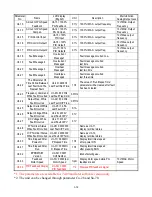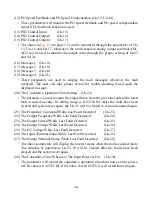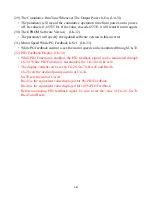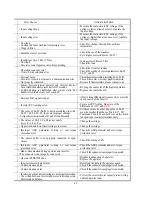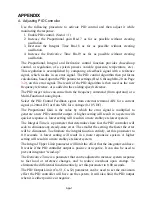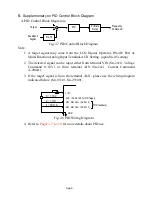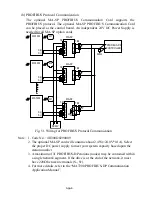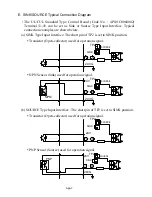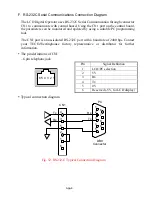
3-79
(1)
Frequency Command
(Un-01)
(2)
Output Frequency
(Un-02)
(3)
Output Current
(Un-03)
(4)
Output Voltage
(Un-04)
(5)
Main Circuit DC Voltage
(Un-05)
•
Through the settings of Sn-33, Sn-34, the above contents can be displayed at the
multi-function analog output terminals (AO1, AO2) in different voltage level of
(0~10V)
(6)
External Analog Command VIN (Un-06)
•
The parameter can monitor the external analog terminal voltage VIN
(0~100%/0~10V). The voltage can be output through the multi-function analog
output terminal AO1, AO2 (Sn-33=05 or Sn-34=05). The output voltage is the PID
feedback voltage when the PID function is used. Please refer to page 3-7, “PID
controller block diagram”.
(7)
External Analog Command AIN (Un-07)
•
The parameter can monitor the external analog terminal current AIN
(0~100%/0~20mA). The current can be output through the multi-function analog
output terminal AO1, AO2 (Sn-33=06 or Sn-34=06). The output current is the PID
feedback voltage when the PID function is used. Please refer to page 3-7, “PID
controller block diagram”.
(8)
Multi-Function Analog Input Command AUX
(Un-08)
•
The parameter can monitor the multi-function analog input terminal AUX voltage
(0~100%/0~20mA). The voltage can be output through the multi-function analog
output terminal AO1, AO2 (Sn-33=07 or Sn-34=07). The output voltage is the PID
target voltage (reference) when the PID function is used. Please refer to page 3-7,
“PID controller block diagram”.
(9)
External Analog Output AO1, AO2 (Un-09, Un-10)
•
The parameter can monitor analog output terminal AO1, AO2 voltage (0~10V).
Their output gain can be adjusted through the setting of parameters Bn-14 or Bn-15.
Their outputs are determined and varied proportionally according to the setting of
(Sn-33 or Sn-34).
(10)
Input Terminal Status (Un-11)
•
The parameter will monitor the status of input terminal
○
1 ~
○
8 : ‘ON’ or ‘OFF’.
(11)
Output Terminal Status (Un-12)
•
The parameter will monitor the status of input terminal RA-RC or R1A-R1C, DO1-
DOG, DO2-DOG or R2A-R2C : ‘ON’ or ‘OFF’.














